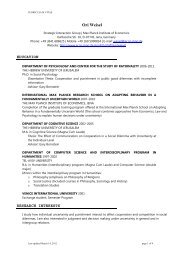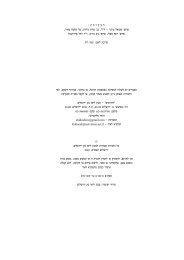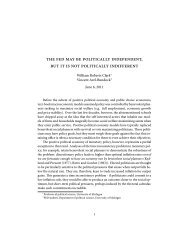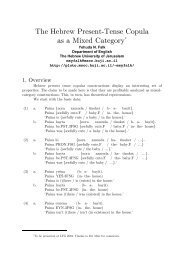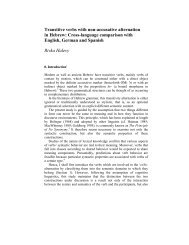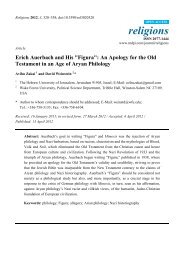View - Pluto Huji Ac Il
View - Pluto Huji Ac Il
View - Pluto Huji Ac Il
Create successful ePaper yourself
Turn your PDF publications into a flip-book with our unique Google optimized e-Paper software.
x<br />
5 6 7 8 9 10 11 12 13 14 15 16<br />
0.0 0.2 0.4 0.6 0.8 1.0<br />
Figure 2: Comparison of confidence intervals with (gray) and without (black) taking selection into account<br />
for the model n = 100 and c=16.<br />
with a probability of an adverse reaction close to the maximal tolerable one θ M . Therefore,<br />
here θ = 0.2 is much more relevant than θ = 0.05, and the conflict is expected to arise<br />
often.<br />
5 Concluding Remarks<br />
For any given research area, one cannot tell how many studies have been conducted but<br />
never reported. The extreme view of the “file drawer problem” is that journals are filled<br />
with the 5% of the studies that show Type I errors, while the file drawers are filled with the<br />
95% of the studies that show nonsignificant results. This citation is taken from the abstract<br />
of a well-known article by Rosenthal (1979) on publication bias. In this note, we consider<br />
the extreme version of the “file drawer problem”, as defined by Rosenthal, and highlight<br />
the difficulties in constructing confidence measures for parameters that are selected on the<br />
basis of the observed data.<br />
In the binomial example described here, the frequentist confidence intervals that take<br />
selection into account almost always contain both low and high probabilities of toxicity<br />
and are hardly informative, indicating the difficulties involved in the analysis of selected<br />
data. The most popular frequentist approach for dealing with selection is a correction for<br />
multiple tests, which requires knowledge of the total number of experiments performed.<br />
Such methods are useless when the number of experiments is unknown. Furthermore, even<br />
if it were known, it would be very large in the situations considered here, and a correction<br />
would necessarily lead to very wide confidence intervals under any multiple comparison<br />
method.<br />
8<br />
p



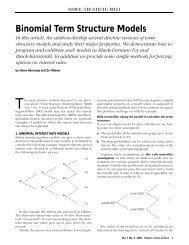
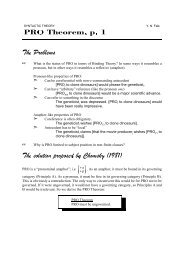
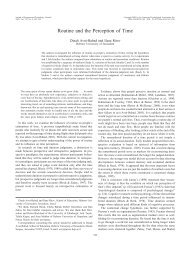
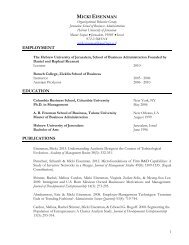
![CV [PDF] - Pluto Huji Ac Il](https://img.yumpu.com/18174585/1/190x245/cv-pdf-pluto-huji-ac-il.jpg?quality=85)
